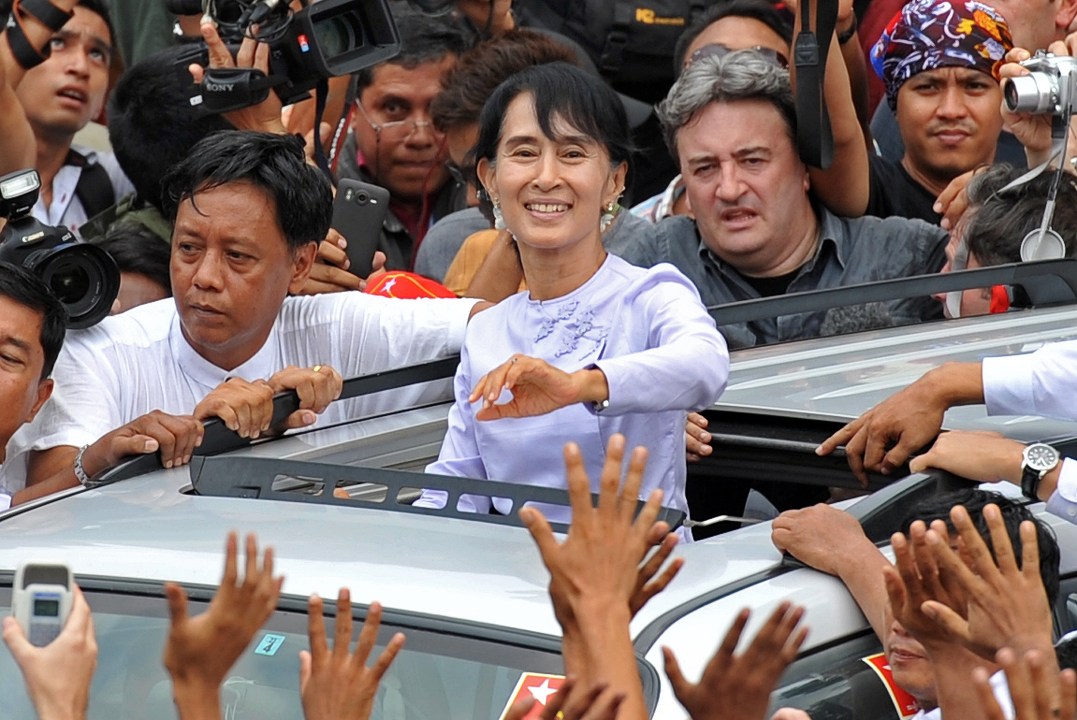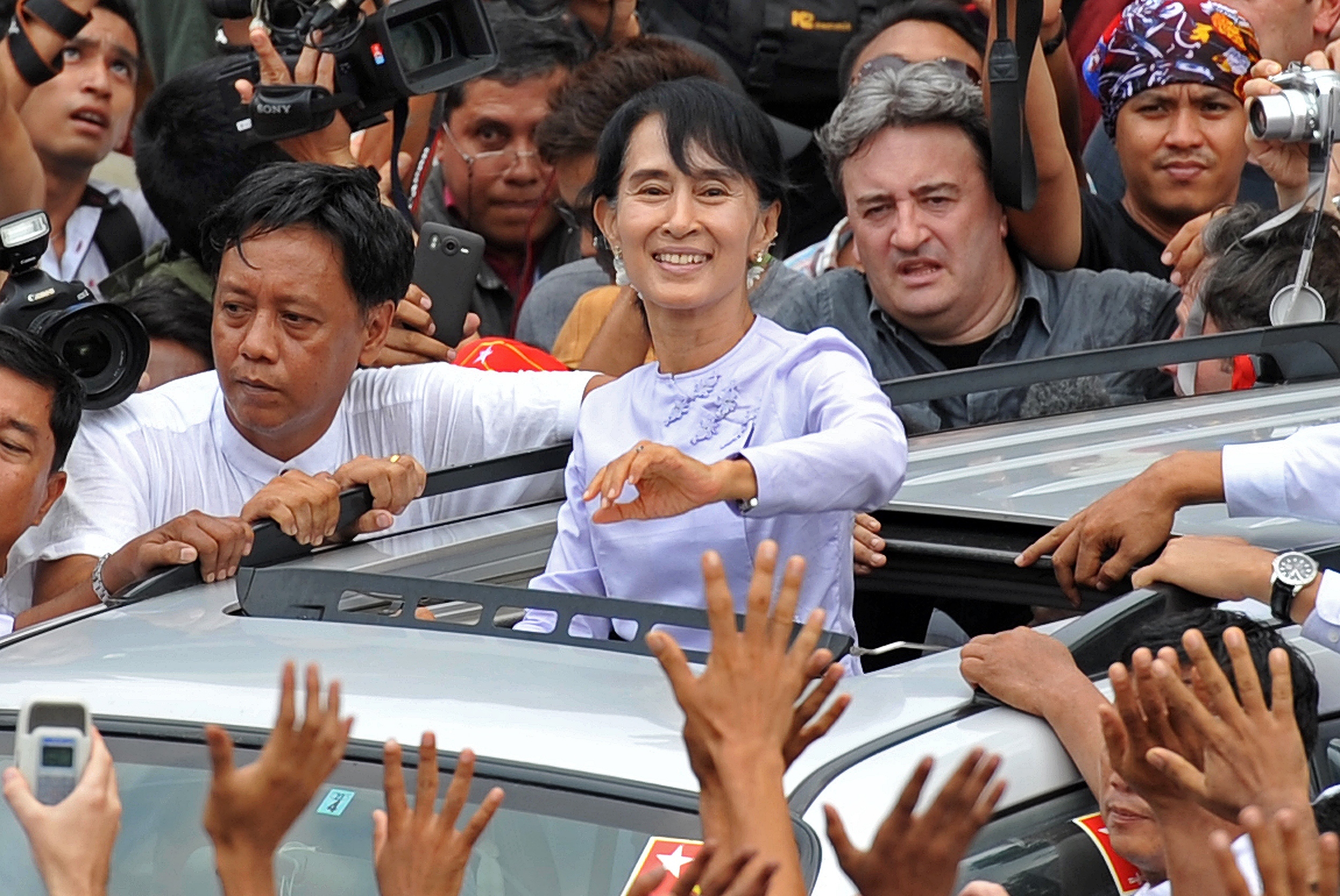Of all the Springs we’ve seen, perhaps the Burmese one is the most astonishing. It’s because the person aligned on the side of oppressive leadership — President Thein Sein, formerly of the junta — in a sense participated in the Spring himself.
Aung San Suu Kyi has claimed a staggering by-election victory — her National League of Democracy party looks set to win 44 of 45 constituencies contested — after last year finally agreeing to end the NLD’s boycott of Burma’s ‘democratic’ system. This was after she’d found common ground with Sein, who had unexpectedly unveiled an array of political reforms. These included the freeing of hundreds of political prisoners, relaxing media censorship, allowing trade unions and halting work on a Chinese hydro-election dam project on the Irrawaddy that was unpopular with citizens. The junta ceded power last year.
But this itself means that Burma is in tremendous flux at the moment. Is this going way too fast, even for Sein? Has he just opened up another dam, and will the groundswell of support gushing out for the revered Suu Kyi all prove too much for the hardcore faction of his Union Solidarity and Development Party? Now she’s got a parliamentary seat, there’s speculation Suu Kyi may get a Cabinet position.
It mostly depends on what prompted Sein to unleash his reforms. Some observers think his military-backed regime had long been wanting a lifting of Western sanctions that may finally help Burma catch up with its prospering Southeast Asian neighbours. If that is so, Sein is unlikely to stem his country’s Spring — already there are calls in Europe for the West to do away with its sanctions, now that Burma seems on the road to fairer elections. And, in a huge reform that’s gone relatively unnoticed given the Suu Kyi news, Burma has floated its currency the kyat — a sign it’s serious about opening its markets.
Still, as with the other Springs, uncertainty hovers in the air.







Comments